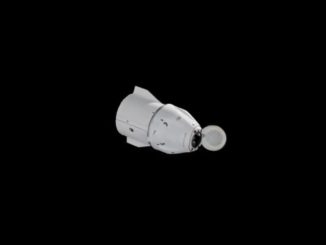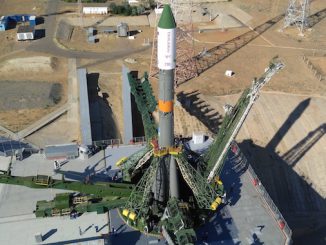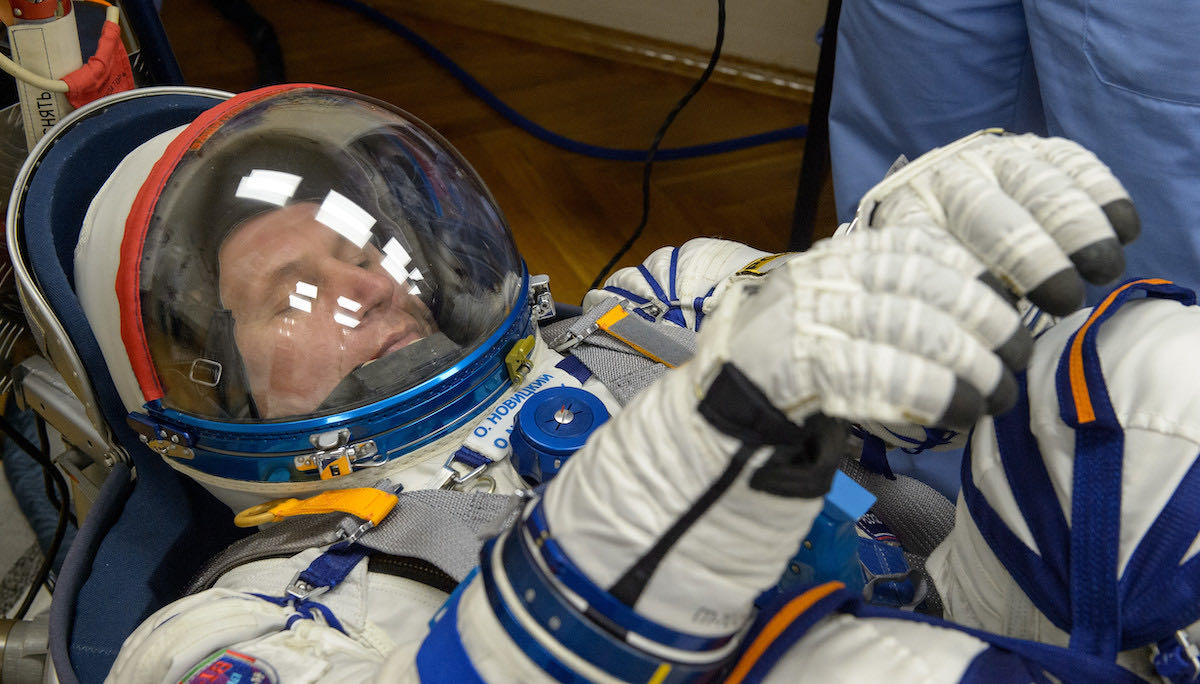
NASA’s acting administrator said Tuesday he does not expect Russian cosmonauts to start launching to the International Space Station on U.S. commercial crew vehicles until next year.
A proposed agreement with Russia to ensure the space station is always staffed with an international crew is awaiting U.S. government approval. The no-funds-exchanged agreement has been in discussion by NASA and Russian space agency officials for years, but sign-off of a final deal has hit roadblocks in recent months.
Steve Jurczyk, NASA’s acting administrator, said Tuesday that the draft version of an “implementing agreement” between NASA and Roscosmos is still being reviewed by the U.S. State Department.
“We’re waiting for the final signatures from the State Department on the implementing agreement, and then we’ll provide that draft to Roscosmos and begin negotiations,” Jurczyk told Spaceflight Now in an interview.
He said he believes NASA is close to getting final State Department approval of the agreement’s text, but the clock has likely run out for getting the State Department signatures and finalizing the agreement with the Russian government in time to assign a Russian cosmonaut to a SpaceX crew mission later this year.
Once the agreement is in place, a Russian cosmonaut would have to be approved to travel to the United States, have a custom SpaceX-developed pressure suit manufactured, and receive basic training on the Crew Dragon spacecraft.
“I believe it’s now too late to develop a suit and do the training for Crew-3,” Jurczyk said, referring to a SpaceX Crew Dragon mission scheduled for launch Oct. 23. “So most likely the earliest mission to have a cosmonaut on it would be Crew-4.”
The Crew-4 mission is currently scheduled for launch no earlier than the first quarter of 2022.
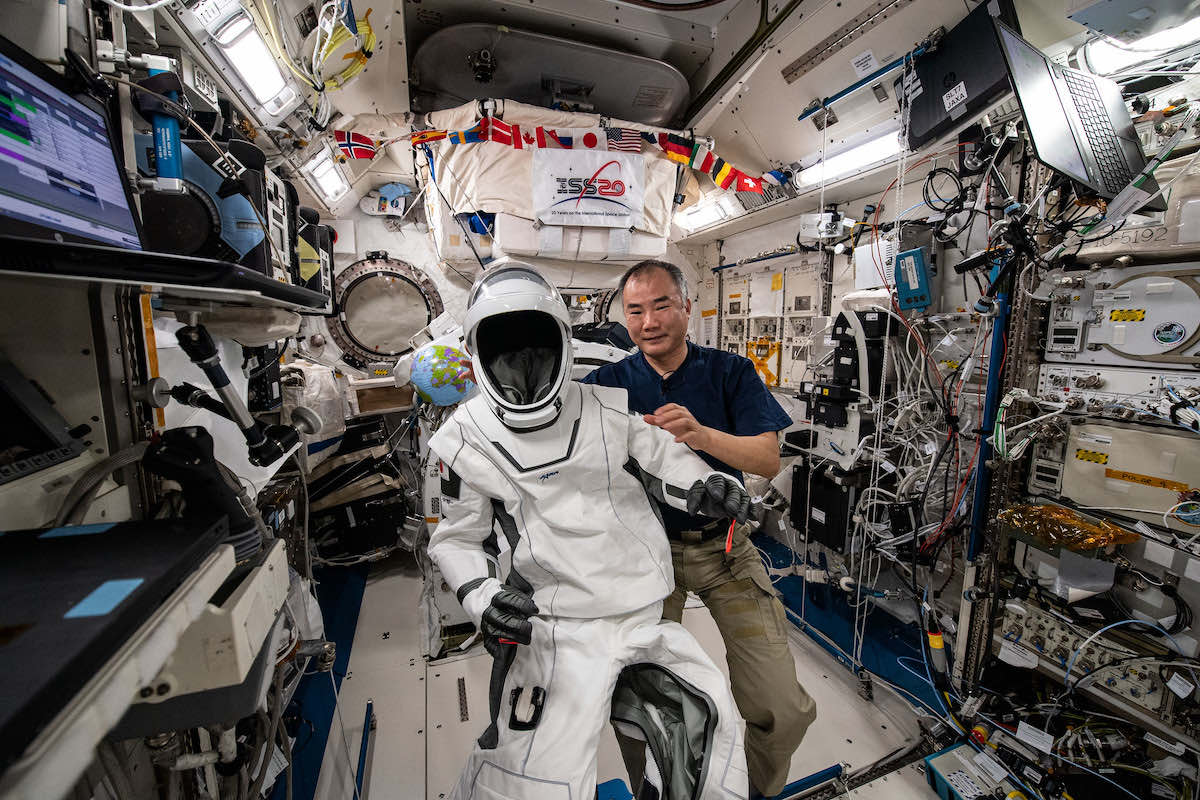
Last November, NASA said it had submitted the draft agreement to the State Department for approval. At that time, NASA hoped to have the deal finalized in time to assign a Russian cosmonaut to the Crew-3 mission late this year.
Rookie NASA astronaut Raja Chari — a former U.S. Air Force fighter pilot — veteran physician-astronaut Tom Marshburn, and European Space Agency astronaut Matthias Maurer have been assigned to the Crew-3 mission. NASA left open the Dragon’s fourth seat for a Russian cosmonaut, but that position is now expected to be filled by a crew member from NASA’s astronaut corps or another international partner.
Once NASA and Roscosmos sign the final agreement, managers want every U.S. crew launch to the space station to have a Russian cosmonaut on-board. And every launch of a Russian Soyuz crew capsule would have an astronaut from the United States or another partner qualified to operate NASA’s segment of the space station.
The agreement will help ensure there is always a crew member on the space station to operate the outpost’s Russian section and U.S. Operating Segment, or USOS, which includes U.S., Japanese, European, and Canadian hardware. If Russia’s Soyuz program or the U.S. crew vehicles are grounded, crew members from the other international partners will still be able to fly to the space station.
It would also guard against a medical emergency that could force half of the space station’s crew to leave the outpost early and return to Earth. If one spacecraft had to depart the station early, all of that capsule’s crew would have to come back to Earth to ensure they’re not stranded in orbit without a lifeboat.
That could force all Russian or all U.S. crew members to evacuate the space station, leaving critical parts of the spacecraft’s propulsion, life support, and control systems at risk.
International astronauts are already flying on SpaceX Crew Dragon missions. Japanese astronaut Soichi Noguchi launched on the Crew-1 mission — the first regular Crew Dragon flight — in November and is due to return to Earth next week.
The Crew-2 mission scheduled for launch Thursday will include Japanese astronaut Akihiko Hoshide and French-born mission specialist Thomas Pesquet, the first European Space Agency crew member to fly on Dragon. They will join NASA commander Shane Kimbrough and pilot Megan McArthur for a half-year on the space station.
NASA relied on Soyuz spacecraft for all crew transportation to and from the station from the retirement of the space shuttle in 2011 until the start of astronaut launches by SpaceX last year.
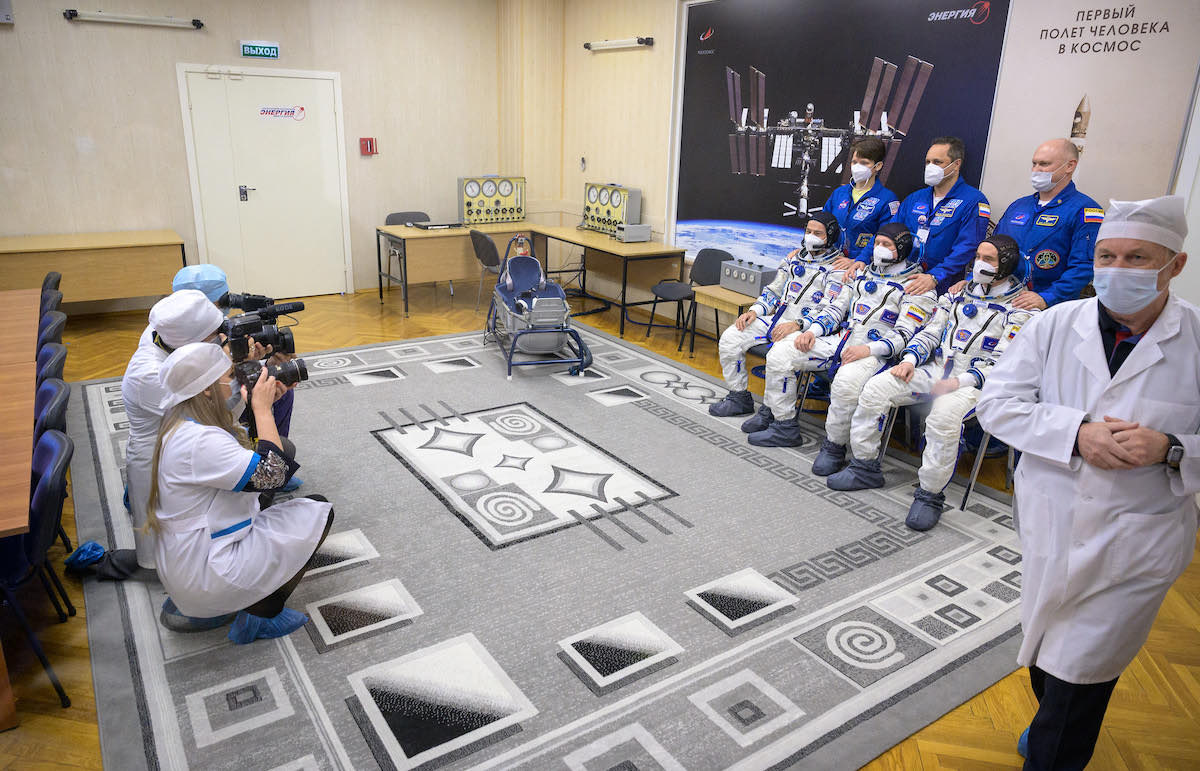
NASA has paid the Russian government roughly $4 billion billion since 2006 to purchase Soyuz seats for astronauts from the United States and the station’s other international partners, according to a report in 2019 by NASA’s inspector general.
Flush with NASA money, Russian space contractors doubled the production of Soyuz crew capsules for launches beginning in 2009 to meet the demand for astronaut transportation to the space station. After NASA’s previous bulk purchase of Soyuz seats in 2017 expired, Russian officials cut back the Soyuz flight rate to two flights last year.
The Soyuz final seat NASA purchased from Russia was filled by astronaut Kate Rubins, who launched on a Soyuz spacecraft last October and landed with two Russian crewmates Saturday in Kazakhstan.
NASA arranged for another Soyuz seat on the most recent Russian crew launch April 9, but did not pay for the ride in cash. NASA astronaut Mark Vande Hei launched on the mission after NASA booked the seat with the help of Axiom Space, a Houston-based company that brokers flights for space tourists and is planning its own private space station.
In exchange for paying for Vande Hei’s ride, Axiom will get a seat for one of it’s private customers on a future NASA-sponsored U.S. crew mission.
Email the author.
Follow Stephen Clark on Twitter: @StephenClark1.


